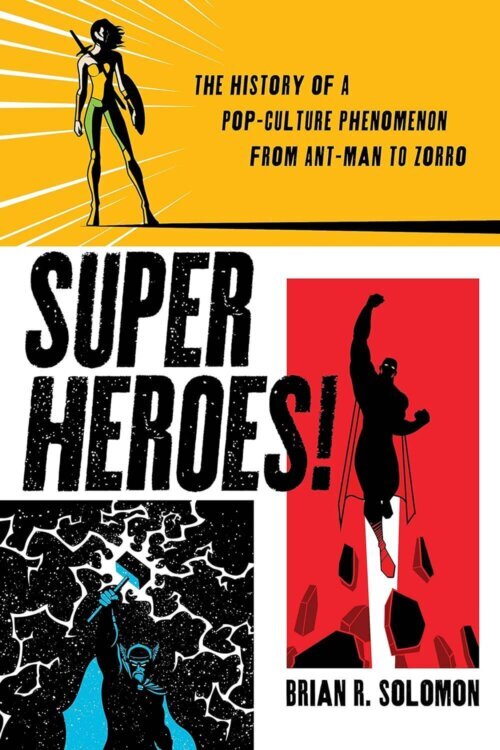The Age of Avengers

Martin Scorsese’s now repeated dismissals of the Avengers movie series have provoked a variety of reactions—some of them very strong. The core of Scorsese’s critique is that Marvel (and similar big budget action movies) are like a “theme park,” that is, they are pure visual spectacle without intellectual or artistic substance. However, there is a reason why the Marvel films are popular. If something is desired by many, it does not necessarily mean that thing is good, but the intense, universal desire for something does mean something. There is something behind the vapid irony and CGI spectacle that touches deeply into the human spirit.
Indeed, before the rise of the twenty-first century superhero movie, comic book culture was engaged in a tug -of -war with the guardians of haute culture for the minds and hearts of moviegoers whenever comic book culture broke out of the marginal realm of readers of actual comic books. For conservative grouches lamenting the decline of the American university, one of the primary complaints was that their more progressive colleagues were “teaching comic books” in their classes. At the same time, it has widely been recognized that comics—along with other elements of American popular culture—are very important to the people of the world and can make a strong case for their place in the Western Canon.
In his recent book, Superheroes! The History of a Pop-Culture Phenomenon form Ant-Man to Zorro, Brian R. Solomon chronicles the history of comic book culture from its inception in the twentieth century until the recent proliferation of seemingly never-ending comic book films and streaming series. First and foremost, it must be mentioned that Solomon’s work is not an academic or even “middle brow” book. It is written for popular readers and contains bite sized portions of mythology, critical theory, and history-along with section headers, lists, and blocked off inserts. At the same time, Solomon does provide interesting pieces of comic book arcana that are not necessarily readily accessible to the outside observer.
Solomon begins his work with the all too true observation that comic book culture is now a global and universal cultural phenomenon and are no longer relegated to the odd world of nerd culture. Drawing from Joseph Campbell’s treatment of mythology, Solomon sees comics as a (post-)modern mythology. Solomon further notes that, like ancient mythological heroes, superheroes can be exemplars of virtue or can be morally ambiguous. Moreover, superheroes, like their mythological predecessors are “super human”—whether through technological enhancements like Batman and Captain America or being “gods” like Thor or Superman. Solomon also makes the important point that superheroes often have a bitter trauma in their origin story, and it is precisely this trauma that sets them on the course to greatness.
Throughout Superheroes! Solomon explores the lifespan of a host of superhero figures. Superman, who first appeared in Action Comics #1 in June of 1938, begins Solomon’s list. Superman famously was the product of Jerry Siegel and Joe Shuster of Cleveland, Ohio. Like other superheroes, Superman has his origins in earlier figures like Popeye and Zorro as well as the silent film actors Douglas Fairbanks and Harold Lloyd—this “structuralist” approach of placing superheroes as part of a wider history of heroes who have been shaped and developed over time is one of the books strong points. Solomon further provides a historical background to the evolution of superheroes. During the Golden Age, Superman, for example, was focused on helping the poor through social justice and thus was, according to Solomon, an echo of Franklin Roosevelt’s New Deal. However, overtime, Superman developed more fantastic powers. Apart from Action Comics #1, the most famous issue of Superman was January 1993’s Superman #75 in which the Man of Steel was famously killed by Doomsday. Solomon concludes his initial discussion with a discussion of how Superman is compared to Christ and Moses. This is perhaps one of the book’s weak points as well as one of the issues of comic book culture itself. While highbrow critics too readily dismiss comic book culture, the proponents of comic book culture often exaggerate its merits.
Solomon’s exploration of the history of comic books as part of the wider history of America is bitter-sweet. Many contemporary Zoomers look with nostalgia toward the 1980s and 90s as a better and more wholesome time. Certainly, elements of the 80s and 90s were more stable and, at least on the surface, more moral. However, much of the pop culture of the period tells a different story. The 1980s saw the rise of a rougher and more violent (and perhaps even nihilistic) Batman in graphic novels such as Frank Miller’s The Dark Knight Returns (1986) and Alan Moore’s The Killing Joke (1988) and the early 1990s saw the emergence of Todd McFarlane’s Spawn series about a CIA agent who sells his soul to the devil as well as Mike Mignola’s Hellboy. This is one of the strong points of comic book culture as well as Brian Solomon’s book: pop culture often provides a glimpse into “the Real” of human life that some “high” culture occasionally glosses over.
America has always been defined by a certain plebeian culture. Ever since the nation’s inception, artists have complained of Americans’ lack of interest in high culture. Indeed, one of the first American poems written by the Revolutionary War poet Philip Freneau notes that American are much more concerned with commerce than with poetry. However, even though there are serious problems with the lack of an aristocratic culture in America, there is also a problem when the upper and lower classes have separate cultures. Comic books are, as Brian Solomon notes, an extension of and, perhaps even a replacement of mythology. At the same time, comics have yet to provide the depth and cultural-forming strength of myth. Finally, Solomon’s suggestion that comics seem to have formed a new religion has some merit, yet the religion of comics will always remain “human, all too human.”




